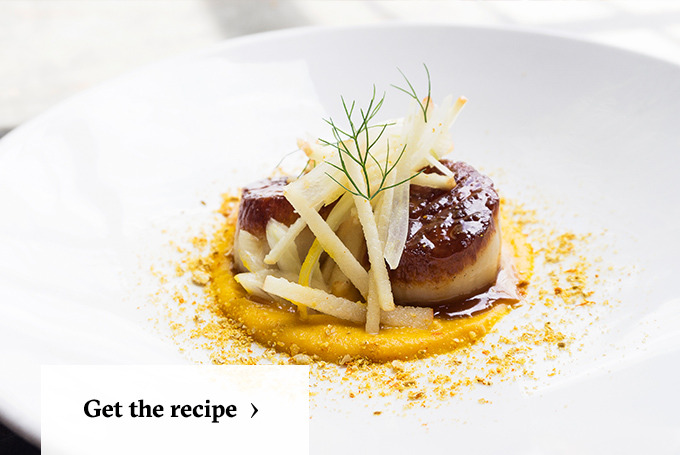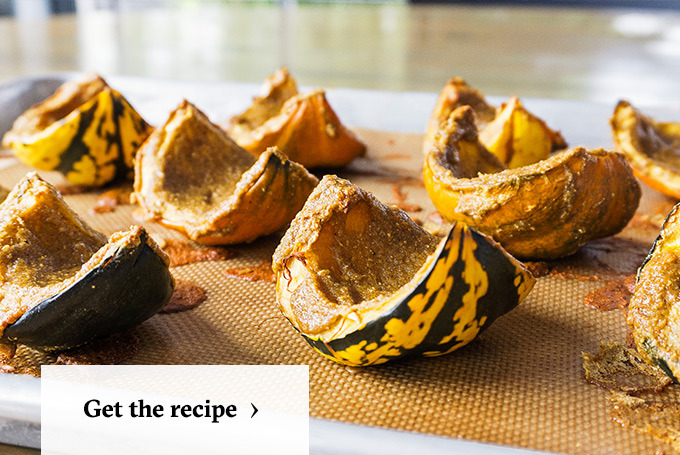How To Cook With Squash Seeds
Why you should be cooking with the whole squash, seeds and all
Fall squash season has arrived, and as markets are flooded with colorful gourds and pumpkins of every shape and size, we're constantly digging for new uses for the autumn bounty. Don't get us wrong; we love a good butternut squash soup or pumpkin pie, but after a trip down to Atlanta to visit Steven Satterfield, chef and owner of Miller Union, our eyes have been opened to a whole new world of squash cookery.
While we've been busy scooping out and tossing squash seeds aside, Satterfield has been creating dishes from these oft-overlooked innards.
"Fall squash seeds have so many different uses; they are underutilized in most scenarios," Satterfield explains. "I like to challenge myself to experiment using every part and piece of a plant to hopefully discover new techniques or methods."
Seeds add a rich nuttiness and flavor to a dish, depending on the technique and type of squash you use. Here are the three ways you can put those squash seeds to work instead of throwing them out.
Blend Them
Seed broth is probably not the first thing that comes to mind when you think of dinner. However, Satterfield blends roasted spaghetti squash seeds with the pan drippings from braised chicken and vegetables to form a rich and thick stock.
"The idea is very similar to making a nut milk," Satterfield explains. "[Seeds] have a nutty flavor when cooked and are filled with fiber and fat, so I figured I could take a similar approach."
He uses the resulting stock as the base sauce for his braised chicken, as well as the finishing liquid for spaghetti squash (see the recipe). Seed stock takes a great deal of flavor from the chicken's pan drippings, resulting in a stock we could practically drink.
Chop Them
You've probably had toasted pumpkin seeds as a snack. However, when smaller butternut squash seeds are roasted and crushed into a fine powder, they take on the flavor and aroma of finely chopped nuts. It's the perfect garnish to add subtle texture and flavor to any fall dish.
RELATED For the Love of Gourd: 10 Killer Squash Recipes "
Satterfield serves seared scallops over a butternut squash purée laced with ginger, then tops them with a fennel and apple salad and a hefty portion of seed powder (see the recipe). "Scallops are very mild and sweet, so I like to enhance them with deeper flavors that echo that innate sweetness," he explains.
Grind Them
"This really was a trial-and-error recipe that I was convinced would not work but then ended up surprising me," Satterfield recalls of roasting acorn squash covered in a paste made from its seeds. The raw seeds are puréed with water and ras el hanout to make a thick paste that sticks to every crack and surface of the squash, forming a spiced shell on the squash as it cooks (see the recipe).
By blending the seeds, you extract some of their oils and beautifully infuse the spices into the squash. Satterfield encourages you to alter the paste to your liking, playing around by adding spices like garam masala or traditional warm pumpkin pie spices.



